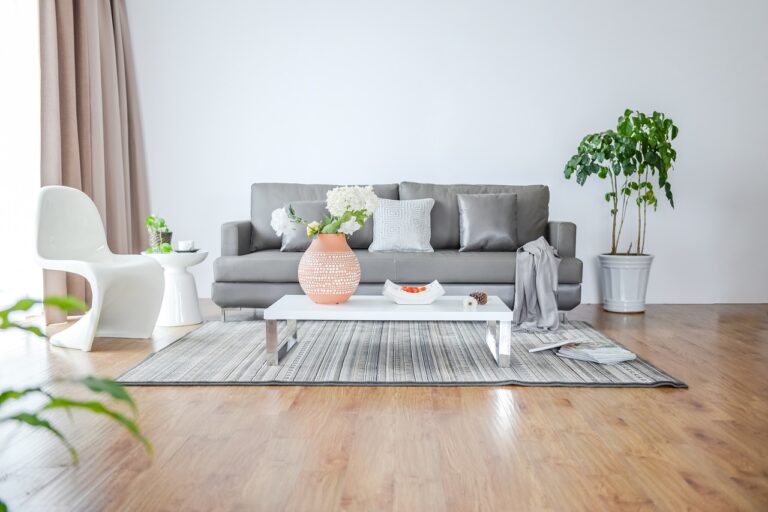How to Incorporate Universal Design Principles in Kitchen Remodeling
all panel mahadev, lotusbhai, allpaanel. com login:Universal design principles are essential when it comes to remodeling any space in your home, but it’s especially crucial in the kitchen. The kitchen is often considered the heart of the home, where families gather and meals are prepared. It’s important to make sure that the kitchen is not only aesthetically pleasing but also functional and accessible for everyone, regardless of age or ability.
Incorporating universal design principles in your kitchen remodeling project can make a world of difference in both the usability and safety of the space. Whether you’re looking to update your kitchen for yourself or to accommodate aging parents or guests with mobility issues, here are some tips to help you create a universally designed kitchen that is both beautiful and practical.
1. Consider Accessibility
When planning your kitchen remodel, think about how easy or difficult it may be for individuals with mobility issues to navigate the space. Make sure there is enough clearance for wheelchairs and walkers to move around freely. Install countertops at varying heights to accommodate individuals of different heights or abilities. Opt for pull-out shelves and drawers instead of traditional cabinets to make accessing items easier for everyone.
2. Choose Sensory-Friendly Materials
Select materials that are not only visually appealing but also tactile-friendly. Avoid glossy finishes that can create glare and make it difficult for individuals with visual impairments to see. Opt for matte finishes and non-slip flooring to reduce the risk of slips and falls. Choose cabinet hardware that is easy to grip and operate for individuals with limited dexterity.
3. Install Good Lighting
Proper lighting is essential in a universally designed kitchen. Make sure there is ample natural light and supplement with task lighting in key areas such as over the sink, stove, and countertops. Consider installing adjustable lighting fixtures that can be easily controlled to suit different needs and preferences. Lighting can make a significant difference in the functionality and safety of the space.
4. Create Flexible Workspaces
Design your kitchen with flexibility in mind. Incorporate adjustable or pull-out countertops that can be raised or lowered to accommodate individuals of different heights or abilities. Consider using multi-functional furniture and appliances that can serve multiple purposes to maximize space and usability. Creating flexible workspaces can make the kitchen more inclusive for everyone.
5. Prioritize Safety Features
Safety should be a top priority when designing a universally accessible kitchen. Install grab bars near the stove and sink to provide support for individuals with mobility issues. Consider incorporating slip-resistant flooring and rounded countertop edges to reduce the risk of accidents. Make sure that all appliances are easily accessible and operable for individuals with varying abilities.
6. Include Assistive Technology
Incorporate assistive technology into your kitchen design to make tasks easier for individuals with disabilities. Consider installing voice-activated appliances, smart lighting systems, and touchless faucets to make daily tasks more convenient for everyone. Assistive technology can enhance the functionality and accessibility of your kitchen for individuals with different abilities.
7. Plan for Aging in Place
If you’re remodeling your kitchen with the intention of aging in place, consider future needs and potential mobility issues. Include features such as wider doorways, lower countertops, and lever handles on cabinets and faucets to accommodate aging in place. Think about how your needs may change over time and plan your kitchen remodel accordingly to ensure it remains functional and accessible as you age.
8. Consult with Professionals
When incorporating universal design principles in your kitchen remodeling project, it’s important to consult with professionals who have experience in accessible design. Work with architects, interior designers, and contractors who specialize in universal design to ensure that your kitchen is not only beautiful but also safe and functional for everyone. These professionals can provide valuable insights and recommendations to help you create a universally designed space that meets your needs and preferences.
9. Stay within Budget
While it’s important to prioritize accessibility and functionality in your kitchen remodel, it’s also essential to stay within your budget. Set a realistic budget and prioritize the features that are most important to you in terms of accessibility and universal design. Consider where you can save money without sacrificing safety or usability, and be open to alternative solutions that may be more cost-effective.
10. Consider Long-Term Value
When planning your kitchen remodel, consider the long-term value of incorporating universal design principles. A universally designed kitchen can increase the resale value of your home and appeal to a wider range of potential buyers. By investing in accessibility and functionality now, you can create a space that will continue to serve you well for years to come and enhance the overall value of your home.
In conclusion, incorporating universal design principles in your kitchen remodeling project can make a significant impact on the functionality and accessibility of the space for individuals of all ages and abilities. By considering accessibility, sensory-friendly materials, lighting, flexibility, safety features, assistive technology, aging in place, consulting with professionals, staying within budget, and considering long-term value, you can create a universally designed kitchen that is beautiful, practical, and inclusive for everyone. Take the time to plan and design your kitchen with universal design principles in mind, and you’ll create a space that is both welcoming and accommodating for all who use it.
FAQs
Q: What are universal design principles?
A: Universal design principles focus on creating spaces that are accessible and usable for individuals of all ages, sizes, and abilities. These principles aim to make spaces inclusive, safe, and functional for everyone, regardless of their physical or cognitive abilities.
Q: Why is it important to incorporate universal design principles in kitchen remodeling?
A: Incorporating universal design principles in kitchen remodeling can improve the functionality and accessibility of the space for individuals with mobility issues, visual impairments, or other disabilities. It can also enhance safety and comfort for everyone who uses the kitchen, making it a more welcoming and inclusive space.
Q: How can I make my kitchen more accessible?
A: To make your kitchen more accessible, consider installing grab bars, non-slip flooring, and adjustable countertops. Opt for sensory-friendly materials, good lighting, and assistive technology to enhance usability. Consult with professionals who specialize in universal design to get expert advice and recommendations for creating a universally designed kitchen.
Q: What are some cost-effective ways to incorporate universal design principles in kitchen remodeling?
A: Some cost-effective ways to incorporate universal design principles in kitchen remodeling include using adjustable furniture and appliances, installing task lighting, and choosing non-slip flooring. You can also save money by prioritizing features that are most important to you in terms of accessibility and functionality.
Q: How can I plan for aging in place when remodeling my kitchen?
A: When remodeling your kitchen with aging in place in mind, consider features like wider doorways, lower countertops, and lever handles on cabinets and faucets. Think about how your needs may change over time and plan your kitchen remodel accordingly to ensure it remains functional and accessible as you age.
Q: How can I stay within my budget while incorporating universal design principles in kitchen remodeling?
A: To stay within your budget while incorporating universal design principles in kitchen remodeling, set a realistic budget and prioritize the features that are most important to you in terms of accessibility and functionality. Consider where you can save money without sacrificing safety or usability and be open to cost-effective alternatives.
Incorporating universal design principles in your kitchen remodeling project can make a world of difference in the functionality and accessibility of the space. By following these tips and considering accessibility, sensory-friendly materials, lighting, flexibility, safety features, assistive technology, aging in place, consulting with professionals, staying within budget, and considering long-term value, you can create a universally designed kitchen that is both beautiful and practical for individuals of all ages and abilities. Take the time to plan and design your kitchen with universal design principles in mind, and you’ll create a space that is welcoming, inclusive, and accommodating for all who use it.







